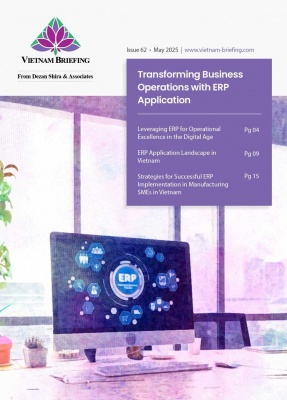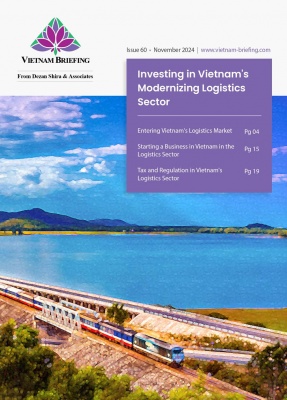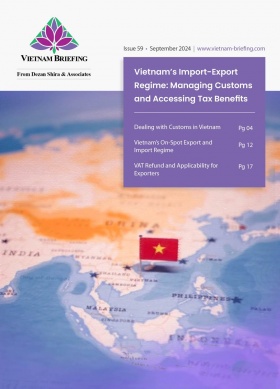Vietnam’s Wood Industry in 2025: Navigating Challenges and Seizing New Opportunities
Vietnam’s wood industry is a vital component of the nation’s economy, consistently ranking among the top exporters. The sector is evolving, focusing on sustainable practices and value-added products, while also navigating challenges such as trade tensions and tariffs. With a commitment to sustainability and growing capabilities, Vietnam’s wood industry is poised for continued growth and innovation in the years to come.
In 2024, the industry achieved record exports of US$17.3 billion, with US$16.25 billion coming from timber and wood products and an additional US$1.05 billion from non-timber forest products, such as bamboo and rattan. Wooden furniture alone generated US$3.1 billion, reflecting the growing demand for Vietnamese-made furniture on global markets.
Economic contribution and sector growth
Vietnam’s forestry sector has become increasingly efficient and sustainable. In 2024, domestic wood output reached 22.7 million cubic meters, marking a nearly 8 percent year-over-year increase due to both reforestation and improved harvesting efficiency.
Employment in the sector is focused in rural regions, where forestry is a vital income source. A 2023 report from Fern states that approximately 600,000 workers were employed in wood processing and furniture manufacturing in Vietnam.
A major factor in this growth was strong demand from key export markets, led by the US, which alone accounts for more than half of the total exports. At the same time, the sector’s trade surplus reached US$14.4 billion, making it one of the top surplus-generating industries in the Vietnamese economy.
Product evolution
Vietnam’s wood product portfolio is expanding beyond traditional offerings to include value-added, eco-friendly items. While wooden furniture remains dominant, comprising around 60 percent of the country’s wood export value, it is also becoming a key supplier of processed wood boards such as plywood and MDF, construction components, and bioenergy products, including wood pellets and chips.
In 2023, Vietnam exported 14.42 million tons of wood chips, generating US$2.22 billion in revenue. Meanwhile, the share of FSC-certified timber is growing rapidly. The Vietnam Timber and Forest Products Association (VIFOREST) reports that more than 520,000 hectares of forest in Vietnam are now certified for sustainable management, which accounts for approximately 13 percent of the total planted forest area. Vietnam aims to certify one million hectares by 2030 in accordance with the forestry development strategy for 2021-2030, which includes a vision for 2050.
Manufacturers are also increasingly producing items from recycled and rapidly growing materials, such as bamboo, driven by global sustainability trends and consumer preferences for circular products.
Key export markets
Vietnam’s largest wood product customer remains the US, which imported US$8.17 billion worth of Vietnamese goods in the first 11 months of 2024, accounting for roughly 56 percent of the total export share. However, this dependence is becoming a strategic vulnerability due to geopolitical tensions and tariff threats.
Exports to China surged to US$1.059 billion in the first half of 2024, a 46.6 percent increase compared to the same period in 2023, primarily driven by demand for semi-processed goods used in manufacturing. Meanwhile, Japan and South Korea maintained stable import volumes, reflecting consistent demand for clean, functional design and sustainably sourced materials.
Vietnam is also seeing fast growth in emerging markets. Exports to Spain increased by over 63 percent year-over-year in 2024, as European buyers sought to diversify away from Chinese and Russian suppliers.
Industrial capabilities and investment
The wood industry in Vietnam is supported by a robust manufacturing base composed of both domestic leaders and foreign-invested enterprises.
Companies such as KEGO, AA Corporation, and Scansia Pacific are recognized for their high-volume production capacity and commitment to sustainability. These firms serve major global clients and are active in developing green manufacturing systems.
In 2024, the number of new foreign direct investment (FDI) projects in the wood industry increased by 7 percent, and total capital inflows grew by over 73 percent year-on-year. Much of this investment focused on upgrading to digital machinery and installing facilities powered by clean energy.
Regional strengths
Vietnam’s manufacturing ecosystem is regionally concentrated, with the southeastern provinces, including Ho Chi Minh City, Binh Duong, and Dong Nai, forming the industrial backbone. These areas benefit from proximity to Cat Lai and Cai Mep–Thi Vai ports, strong logistics infrastructure, and access to skilled labor (Vietnam Briefing).
In contrast, the north-central provinces of Nghe An and Thanh Hoa are emerging as forest-rich zones for timber cultivation and primary processing, thanks to the growth of FSC-certified plantations and government-backed afforestation programs.
US tariffs and regulatory tensions
A key development in 2025 was the implementation of a 46 percent reciprocal tariff by the U.S. on selected Vietnamese wood products. The move, triggered by concerns about transshipped Chinese goods, has significantly disrupted trade relationships and created uncertainties for exporters.
To counteract this, the Vietnamese government has prioritized:
- Strengthening traceability systems through blockchain-based verification;
- Expanding timber imports from the US, totalling US$316.36 million in 2024, a 32.9 percent increase from 2023, to ensure clear product origin; and
- Diplomatic negotiations with U.S. officials to prevent further escalation, particularly concerning compliance with the Lacey Act and anti-dumping regulations.
These efforts have helped maintain Vietnam’s reputation as a compliant and high-quality exporter, but the long-term solution lies in diversification and innovation.
Strategic diversification and future opportunities
Vietnam’s wood industry is rapidly diversifying in both markets and product segments.
In terms of geography, Vietnam is targeting:
- India, which is experiencing rising furniture demand, welcomes Vietnamese cooperation in trade and investment;
- Middle Eastern countries, where large-scale infrastructure and hospitality projects create opportunities for furniture and construction wood exports; and
- ASEAN neighbors, where trade is streamlined through regional agreements such as the Regional Comprehensive Economic Partnership (RCEP).
Product diversification includes:
- FSC-certified wooden toys and kitchenware for European markets;
- Modular furniture systems tailored for compact urban housing; and
- Green-certified wood panels and composite materials for low-emission construction.
Digitization is accelerating. Many companies are utilizing virtual showrooms, AR-enabled customization tools, and blockchain logistics platforms to connect with global customers and enhance transparency.
Future forwards
Vietnam’s wood industry is no longer just a low-cost alternative. It is emerging as a global leader in sustainable, high-quality, and digitally enabled production. The sector faces significant headwinds, particularly from shifting trade policies and rising environmental expectations. But its ability to evolve, through reforestation, FDI attraction, technological upgrades, and market diversification, makes it a model for transformation in the face of global change.
With strategic focus and coordinated action from government and industry, Vietnam is well-positioned to move from being the “world’s workshop” to a sustainable wood powerhouse.
About Us
Vietnam Briefing is published by Asia Briefing, a subsidiary of Dezan Shira & Associates. We produce material for foreign investors throughout Asia, including ASEAN, China, and India. For editorial matters, contact us here and for a complimentary subscription to our products, please click here. For assistance with investments into Vietnam, please contact us at vietnam@dezshira.com or visit us at www.dezshira.com.
Dezan Shira & Associates assists foreign investors throughout Asia from offices across the world, including in Hanoi, Ho Chi Minh City, and Da Nang. We also maintain offices or have alliance partners assisting foreign investors in China, Hong Kong SAR, Dubai (UAE), Indonesia, Singapore, Philippines, Malaysia, Thailand, Bangladesh, Italy, Germany, the United States, and Australia.
- Previous Article Selling to Vietnam’s Market: Frequently Asked Questions
- Next Article Industrial Design Registration and Protection in Vietnam
































